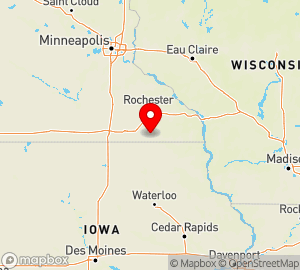Minnesota
Minnesota State Information

www.state.mn.us
Area (sq mi):: 86938.87 (land 79610.08; water 7328.79) Population per square mile: 64.50
Population 2005: 5,132,799 State rank: 0 Population change: 2000-20005 4.30%; 1990-2000 12.40% Population 2000: 4,919,479 (White 88.20%; Black or African American 3.50%; Hispanic or Latino 2.90%; Asian 2.90%; Other 4.10%). Foreign born: 5.30%. Median age: 35.40
Income 2000: per capita $23,198; median household $47,111; Population below poverty level: 7.90% Personal per capita income (2000-2003): $32,017-$34,031
Unemployment (2004): 4.60% Unemployment change (from 2000): 1.50% Median travel time to work: 21.90 minutes Working outside county of residence: 33.70%
List of Minnesota counties:
Minnesota Parks
- US National Parks
- Urban Parks
- State Parks
- Parks and Conservation-Related Organizations - US
- National Wildlife Refuges
- National Scenic Byways
- National Forests
Minnesota
Thirty-second state; admitted on May 11, 1858
State capital: St. Paul Nicknames: North Star State; Gopher State; Bread and Butter State; The Land of 10,000 Lakes State motto: L’Etoile du Nord (French “The North Star”) State bird: Common loon (Gavia immer) State butterfly: Monarch (Danaus plexippus) State drink: Milk State fish: Walleye (Stizostedion vitreum) State flower: Pink and white lady’s slipper (Cypripedium reginae) State fruit: Honeycrisp apple (Malus pumila cultivar Honeycrisp) State gem: Lake Superior agate State grain: Wild rice or manomin (Zizania aquatica or Zizania palustris) State muffin: Blueberry muffin State mushroom: Morel or sponge mushroom (Morchella esculenta) State photograph: “Grace” State song: “Hail! Minnesota” State tree: Norway (red) pine (Pinus resinosa)
More about state symbols at:
www.sos.state.mn.us/student/symbols.html
http://www.leg.state.mn.us/leg/Symbols.asp
SOURCES:
AmerBkDays-2000, p. 357 AnnivHol-2000, p. 80
STATE OFFICES:
State web site: www.state.mn.us
Office of the Governor 130 State Capitol 75 Rev Dr Martin Luther King Jr Blvd Saint Paul, MN 55155 651-296-3391 fax: 651-296-2089 www.governor.state.mn.us
Secretary of State
60 Empire Dr
Suite 100
Saint Paul, MN 55103
651-296-2803
fax: 651-215-0682
www.sos.state.mn.us
Minnesota
a state in the northern USA, west of the Great Lakes. Area, 218,000 sq km. Population, 3,805,000 (1970), of whom 66.4 percent are urban dwellers. Capital, St. Paul.
Much of the state consists of rolling plains, although in the northeast there are hills up to 701 m high. The state has a temperate continental climate, with the mean January temperature ranging from −10.6°C in the southeast to −15.3°C in the northwest and the mean July temperature ranging from 22.5°C to 17°C, respectively. Precipitation reaches 700 mm a year. The largest river is the Mississippi, and there are about 10,000 lakes. Coniferous forests have survived in the northeast, but the south-west, part of the USA’s corn and wheat belt, has been largely plowed up. The main branch of the economy is industry, whose development has been promoted by the proximity of the Great Lakes. The iron ore mined in the Mesabi, Vermilion, and Cuyuna ranges accounts for more than two-thirds of the nation’s output. The capacity of electric power plants, mostly thermal, was 2.5 million gigawatts in 1973. In 1971 more than 209,000 persons were employed in manufacturing. The principal industries are flour milling, butter and cheese production, and leather-making, concentrated in St. Paul and Minneapolis, which are situated at the intersection of the dairy, corn, and wheat regions. Other well-developed industries are machine building, armaments (St. Paul, Minneapolis), ferrous metallurgy, and shipbuilding (Duluth-Superior industrial complex).
Agriculture is important to the economy. In 1971 there were 119,000 farms, as compared with 203,000 in 1935, occupying 63 percent of the state’s area. Animal husbandry, chiefly dairy farming in central and southeastern Minnesota, yields about 70 percent of the agricultural output. In 1971 there were 4 million head of cattle (including about 1 million cows), 500,000 sheep, 3.5 million hogs, 14 million chickens, and 500,000 turkeys. The main crops are wheat, corn, rye, sugar beets, soybeans, and flax. The major port is Duluth-Superior. Minnesota is the country’s leading producer of butter, dry milk, oats, and turkeys and the second leading producer of cheese.